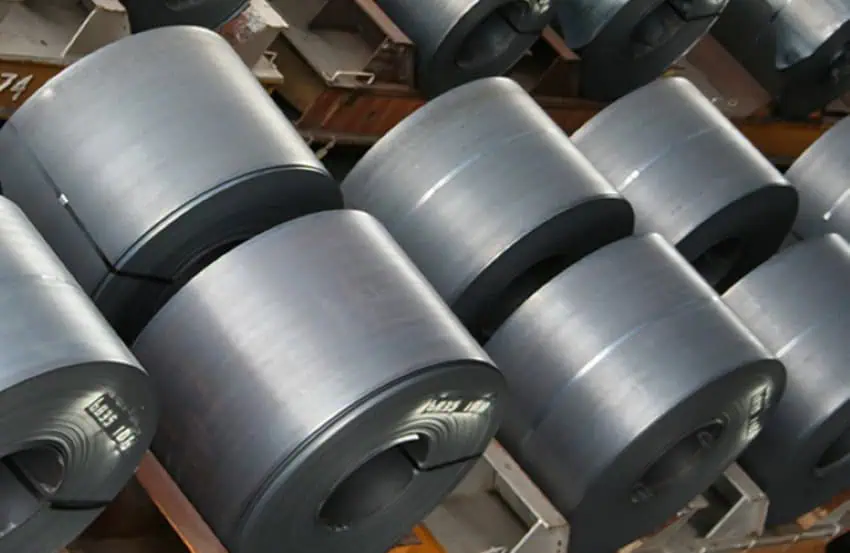U.S. President Donald Trump’s latest tariff threat and its potential impact on next year’s mandatory revision of the U.S.-Mexico-Canada free trade agreement (USMCA) could extend Mexico’s economic uncertainty into 2027.
According to J.P. Morgan economist Gabriel Lozano, the review of the USMCA might not be as routine as previously thought, and this could hamstring investment decisions for another two years.
Mark Carney says USMCA is a basis for a broader talks on trade and that it will have to change, and that Trump has taken advantage of deal with the tariffs. pic.twitter.com/llyNvFvLRt
— Courtney Theriault (@cspotweet) May 6, 2025
“Our baseline scenario is that the USMCA review will begin in October as scheduled,” Lozano told the newspaper El Economista. “But we’re already beginning to see a risk that … the imposition of recurring tariffs could mean we might not have an agreement until 2027.”
This unpredictability prompted J.P. Morgan to maintain its forecast of 0% growth this year for Mexico and just 1% growth next year, Lozano said. Other reputable forecasters give similar figures of 0.1% and 0.2% growth this year.
“We are anticipating a relatively moderate recovery and a mediocre growth rate,” he said, adding that this calculation does not yet take into account the impact that the draconian U.S. immigration policy will have on remittances.
Increasingly massive deportations will directly impact consumer spending in Mexico, Lozano said.
A dangerous precedent?
Kenneth Smith, a partner at the Agon-Economía/Derecho/Estrategia consulting firm and Mexico’s chief negotiator during USMCA talks in 2017-2018, agreed with Lozano’s comments about the double blow of tariffs and the USMCA revision.
During a discussion panel organized by the Mexican Institute for Competitiveness (IMCO) this week, Smith said the U.S. is setting a dangerous precedent with the “temporary” tariffs Trump has employed this year.
Mexico currently faces three types of U.S. tariffs that already affect key sectors.
Since Trump took office on Jan. 20, Mexico has had to deal with 25% tariffs on products that don’t meet USMCA rules of origin, selective levies on the automotive sector and 50% tariffs on steel and aluminum.
Now President Claudia Sheinbaum is dealing with the potential imposition of an across-the-board 30% tariff beginning Aug. 1.
Smith warned that the tariffs imposed by the United States on Mexico could become the new foundation of the USMCA, suggesting U.S. negotiators could seek to make the tariffs permanent.
“The tariffs being applied as temporary measures could end up being incorporated as permanent rules during the treaty review,” Smith warned.
Mexico’s auto industry is preparing for just such a scenario, according to Odracir Barquera, president of the Mexican Automotive Industry Association (AMIA).

“We can’t be sure of the U.S. posture yet,” he told the Cluster Industrial website, “but indications are it will feature an aggressive, unilateral strategy.”
Barquera said he wouldn’t be surprised if the U.S. seeks to significantly hike the regional content requirements. He also suggested labor requirements could be stiffened. Originally conceived as a routine review, next year’s USMCA revision could become a window for profound changes, Smith warned, recalling that Mexico and Canada fought to eliminate a “sudden death” clause. Such a provision would have allowed any of the three participating nations to terminate the agreement at any time.
The trade tensions resulting from Trump’s aggressive tariff policy have already cost Mexico tremendously, according to the U.N.’s Economic Commission for Latin America and the Caribbean (CEPAL).
CEPAL’s Marco Llinás, citing data from Mexico’s central bank, told the newspaper La Jornada that the uncertainty caused by the tariff threats likely resulted in a 21% drop in foreign direct investment during the first quarter of 2025.
CEPAL’s executive secretary, José Manuel Salazar-Xirinachs, said U.S. protectionist trade policy could force Mexico to significantly diversify trade relations. Currently, 80% of Mexico’s exports are shipped to the United States.
With reports from El Economista, El Financiero, Cluster Industrial and La Jornada
